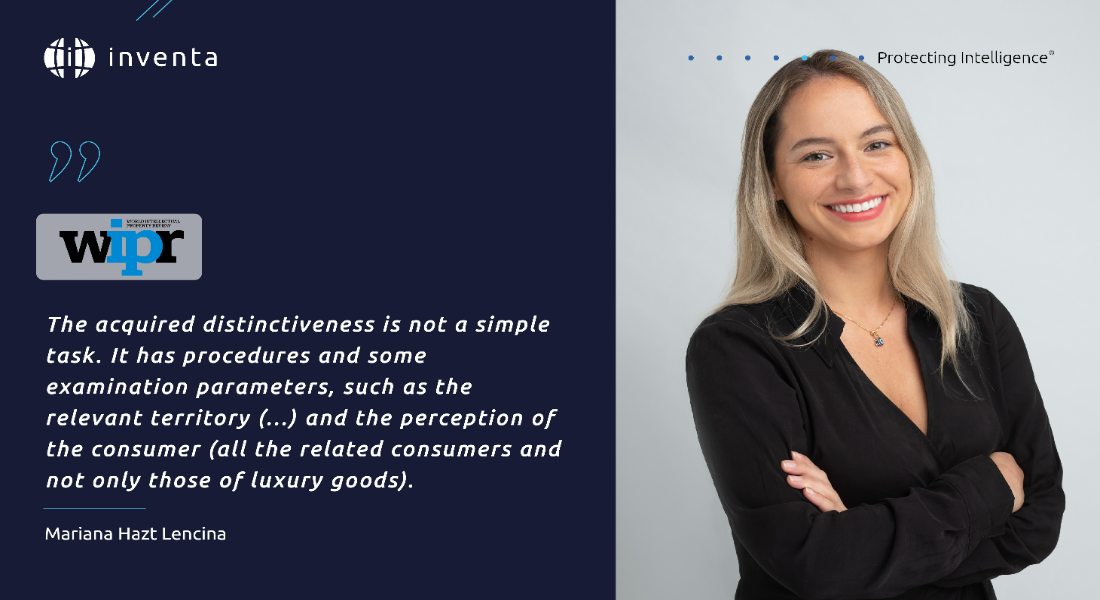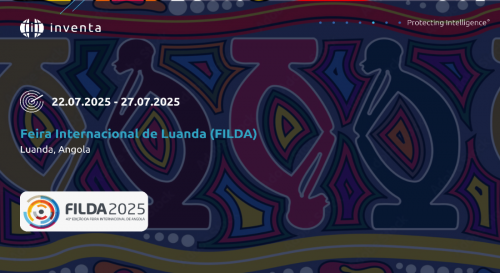
Prada’s iconic (but not totally distinctive) triangle
Trademarks are signs that identify the commercial origin of certain goods and services and distinguish them from those of other companies. However, while this simple sentence explains their intended function, identifying a trademark isn't as straightforward.
Words and symbols are the first types of trademarks that we can imagine. However, this is only the tip of the iceberg. Trademarks can be found in colours, sounds, shapes and even patterns. This is not an exhaustive exemplification.
Mainly, a trademark must be distinctive.
Prada’s triangles
Recently, the distinctiveness of the “iconic Triangle” from Prada was debated, regarding the application for the registration of a pattern trademark of multiple triangles, in black and white.
This pattern of multiple triangles was the object of the European Union Trademark application No. 018683223, which covered goods and services of classes 3, 9, 14, 16, 18, 20, 24, 25, 27, 28 and 35.
In February 2023, the trademark application was refused, for being “devoid of any distinctive character”.
It is important to note that the distinctive character of a trademark is analysed by considering the perception of the relevant consumer. In this case, the relevant consumer is not only the consumer of luxury goods but the average consumer of the goods and services covered by the application.
The European Union Intellectual Property Office (EUIPO) considered that the pattern “consists of a decorative design on the objected goods or their packaging in Classes 3, 9, 14, 16, 18, 20, 24, 25, 27 and 28 and is a banal design element in relation to the services in Class 35”.
Analysing the goods and services covered by the application, the EUIPO refused the trademark application for most of them, indicating that PRADA could continue with the registration procedure for a few items such as:
Class 9: Recorded and downloadable media, computer software, blank digital or analogue recording and storage media; LED [light-emitting diodes]; electronic publications.
Class 20: Shells; yellow amber.
Class 35: Business management; business administration; office functions; auctioneering; business research; import-export agencies; marketing research; marketing studies; modelling for advertising or sales promotion; public relations; shop window dressing; organisation of fashion shows for promotional purposes.
Prada loses appeal
PRADA appealed and the Board of Appeal dismissed it on December 19, 2023, deciding that the consumer would not connect the pattern with the commercial origin, and therefore, the previous decision was correct, allowing the registration for only some of the goods and services.
The crux of the matter lay in the inherent distinctiveness of the pattern which, on its own, had to evoke a connection to the commercial origin without ambiguity (without second thoughts).
The European Union Trademark Regulation (Regulation (EU) 2017/1001 of the European Parliament and of the Council of 14 June 2017) disposes, on its article 7 (3), that a trademark application won’t be rejected for lack of distinctiveness if it “has become distinctive in relation to the goods or services for which registration is requested as a consequence of the use which has been made of it”.
Acquired distinctiveness challenge
As explained by Eleonora Rosati, “the only card that it [Prada] should have played from the outset—seems to be claiming and demonstrating acquired distinctiveness of its Triangle mark, with however the awareness that many worthy fashion brands have fallen on this front already”.
The acquired distinctiveness is not a simple task. It has procedures and some examination parameters, such as the relevant territory (that must be in the European Union, even though there is no need to prove the distinctiveness in each Member State) and the perception of the consumer (all the related consumers and not only those of luxury goods).
Prada has already many other registrations with the triangle, and this decision doesn’t mean that they are unprotected. On the other hand, despite pattern signs being accepted as trademarks, some of these have a long and hard battle to be considered (or not).
While Prada maintains other registrations with the triangle, the rejection of this specific pattern trademark underscores the challenges some patterns face in obtaining trademark protection.
This is a co-published article, which was originally published in the World Intellectual Property Review (WIPR).
Lista de Territórios
Não existem resultados para a sua pesquisa.
- África
- África do Sul
- Angola
- Argélia
- Benin
- Botsuana
- Burkina Faso
- Burundi
- Cabo Verde
- Camarões
- Chade
- Comores
- Costa do Marfim
- Djibuti
- Egito
- Eritreia
- Eswatini (Suazilândia)
- Etiópia
- Gabão
- Gâmbia
- Gana
- Guiné
- Guiné-Bissau
- Guiné-Equatorial
- Lesoto
- Libéria
- Libia
- Madagáscar
- Maiote
- Malaui
- Máli
- Marrocos
- Maurícias
- Mauritânia
- Moçambique
- Namíbia
- Níger
- Nigéria
- Quénia
- República Centro-Africana
- República Democrática do Congo
- República do Congo
- Reunião
- Ruanda
- Saara Ocidental
- São Tomé e Principe
- Seicheles
- Senegal
- Serra Leoa
- Somália
- Sudão
- Sudão do Sul
- Tanzânia
- Togo
- Tunísia
- Uganda
- Zâmbia
- Zanzibar
- Zimbábue
- África (OAPI)
- África (ARIPO)
- Mais Territórios
- Macau
- Maldivas
- Portugal
- Timor Leste
- Marca da União Europeia (EUIPO)
- Marca Internacional (Sistema de Madrid)
- Patente Europeia (IEP)
- Tratado de Cooperação em matéria de Patentes (PCT)




